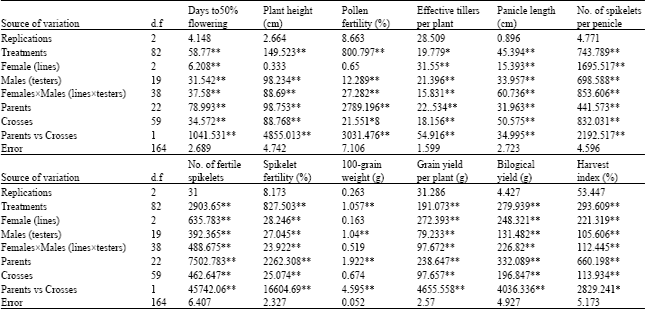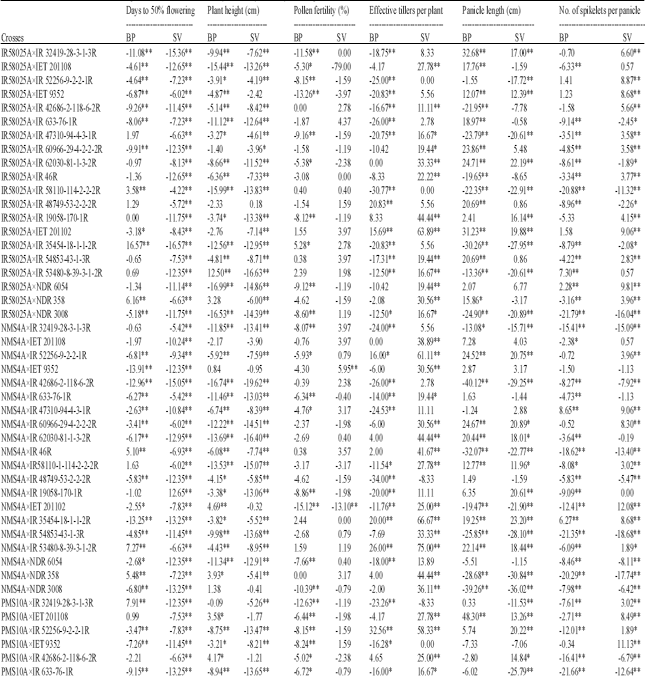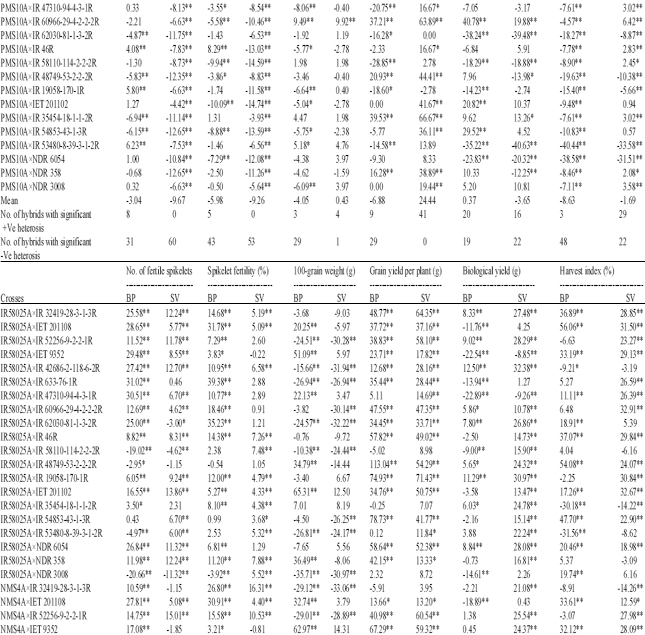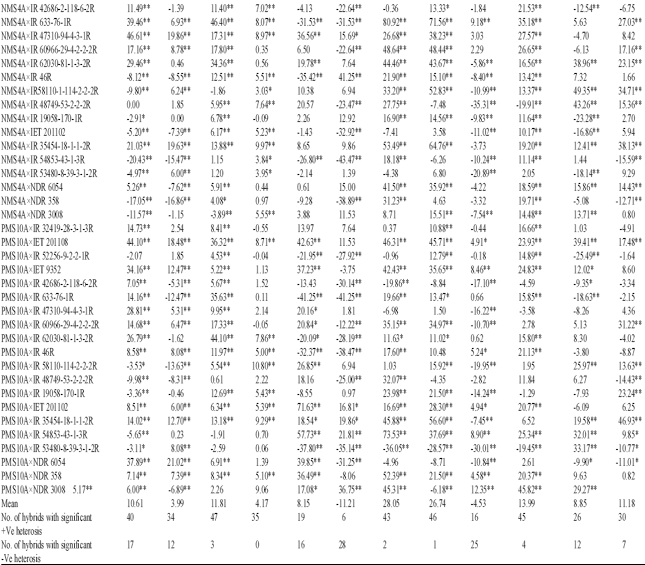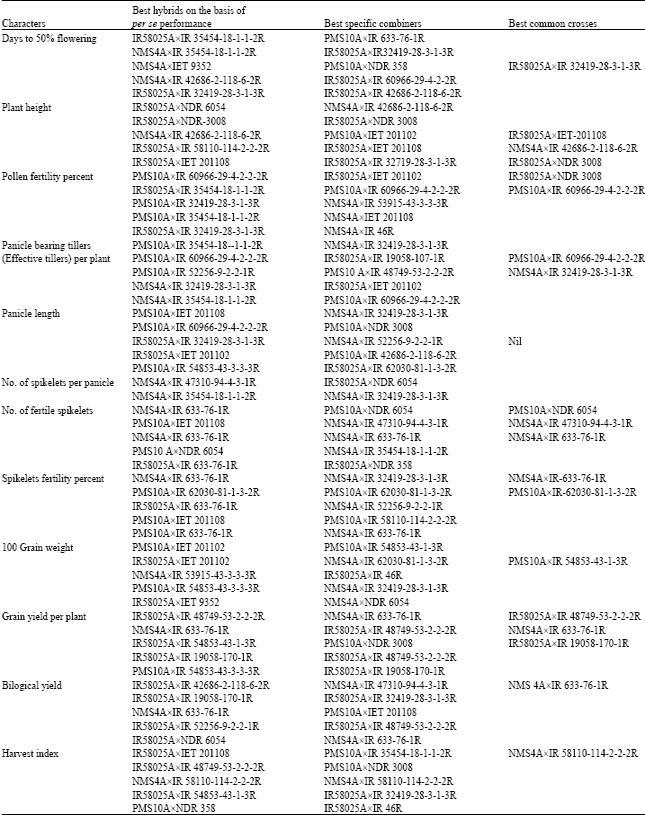Research Article
Heterosis Studies for Yield and its Components in Rice Hybrids using CMS system
Department of Genetics and Plant Breeding, Narendra Deva University of Agriculture and Technology, Kumarganj, Faizabad-224229, U.P., India
P. Pandey
Department of Genetics and Plant Breeding, Allahabad Agricultural Institute-Deemed University, Allahabad-211007 U.P., India
S. P. Giri
Department of Genetics and Plant Breeding, Narendra Deva University of Agriculture and Technology, Kumarganj, Faizabad-224229, U.P., India
J. L. Dwivedi
Department of Genetics and Plant Breeding, Narendra Deva University of Agriculture and Technology, Kumarganj, Faizabad-224229, U.P., India










